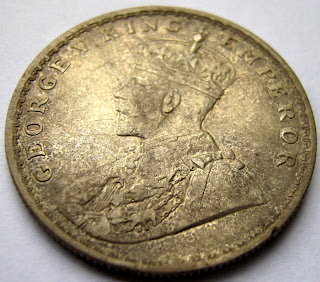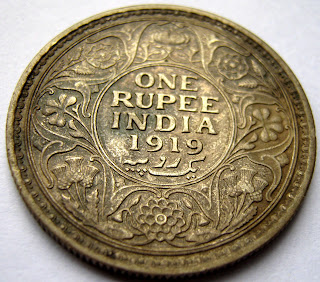Search This Blog
Friday, October 21, 2011
Sunday, October 2, 2011
RUPEE COINS WITH OFFICIAL RUPEE SYMBOL RELEASED
8th July 2011 will be marked as a historic date on which the release of the first set of Indian Rupee coins with the all famous Rupee Symbol will take place. The new series of coins have been introduced with features at the edge, which make it convenient for easy recognition and distinction.
In a statement, the Finance Ministry said the security edging of new series of coins would be good for better recognition by visually challenged persons and will have improved counterfeit resistance.
Last year the government had approved a symbol for the rupee that elegantly combines Devanagiri and Roman scripts to signify the rising strength, ambition and spread of the country’s currency in a fast globalizing economy.
The symbol designed by D Udaya Kumar, who has just joined the faculty of the department of design at IIT Guwahati, was selected from more than 3,000 entries that were evaluated by a jury of experts, government and RBI officials.
As on date, approximately 100 million coins of all denominations have been minted.
Some of my new rupees symbol coins from my collections for you all
ONE RUPEE COIN
if compared with old design one rupee coin, the new design smaller in diameter and as same to older fifty paise coin size.
TWO RUPEES COIN
if compared with old design two rupees coin, the new design smaller in diameter and as same to older one rupee coin size.
FIVE RUPEES COIN
TEN RUPEES COIN
No changes in size of the ten rupees coin
India Ten Rupees Bi-Metal Issue Coins
RBI has launched Ten rupees bi-metal coins for circulation,
but it is hard to find it, all the Ten rupees coin are with coins collectors.
The first ever ten rupee bi-metal coin dated 2005 with the theme Unity in
Diversity and the latest one with new rupee symbol dated 2011.
RBI also issued commemorative coins in ten rupee bi metal
for circulations, namely, Homi Bhabha & RBI platinum jublee
RBI also introduces a UNC set for coins collectors
Ter-centenary of gur-ta-gaddi of shri guru granth sahib.
On this post I like to share my ten rupees bi metal coins
collections, hope you all like it.
2005 Unity in Diversity Ten Rupees Bi-Metal Coin (Very Rare In Bi-Metal Issue)
2006 Unity in Diversity Ten Rupees Bi-Metal Coin
2007 Unity in Diversity Ten Rupees Bi-Metal Coin
2008 Connectivity and Information Technology Ten Rupees Bi-Metal Coin
2009 Connectivity and Information Technology Ten Rupees Bi-Metal Coin
2010 Connectivity and Information Technology Ten Rupees Bi-Metal Coin
20011 New Rupee Symbol Ten Rupees Bi-Metal Coin
Homi Bhabha Birth Centenary Year Ten Rupees Bi-Metal Coin
RBI Platinum Jubilee Ten Rupees Bi-Metal Coin
Ter-Centenary Of Gur-Ta-Gaddi Of Shri Guru Granth Sahib Ten Rupees Bi-Metal Coin UNC Set
Wednesday, August 10, 2011
1947, (King George VI)
Year of issue – 1947
Specifications
Weight- 180 grains
Metal composition- 165 grains of pure silver and 15 grains of alloy
Diameter –1.1”
Shape - Circular
Edge – milled
Obv - effigy of the then king or queen of United Kingdom
Weight- 180 grains
Metal composition- 165 grains of pure silver and 15 grains of alloy
Diameter –1.1”
Shape - Circular
Edge – milled
Obv - effigy of the then king or queen of United Kingdom
Rev – Value in English, Hindi and Persian with a stalking tiger.
Metal composition – Pure Nickel
1940 - 1945, (King George VI)
Metal composition - quaternary alloy ( 50% silver,40% copper, 5% Nickel and 5% Zinc)
Edge – Security
Years of issue – 1940 to 1945
Pure Nickel Rupee:
Due to the rise of price of silver after the end of World war II, the Government decided to issue rupee and other Quaternary Silver coins, in pure Nickel.
Specifications
Weight- 180 grains
Metal composition- 165 grains of pure silver and 15 grains of alloy
Diameter – 1.3”
Shape - Circular
Edge – milled
Obv - effigy of the then king or queen of United Kingdom
Rev – Value of the coin
Weight- 180 grains
Metal composition- 165 grains of pure silver and 15 grains of alloy
Diameter – 1.3”
Shape - Circular
Edge – milled
Obv - effigy of the then king or queen of United Kingdom
Rev – Value of the coin
1937 - 1939, (King George VI)
Obv – Crowned head of King George VI with the legend “GEORGE VI KING EMPEROR”
Years of Issue – 1938, 1939
Quaternary Silver Rupee:
The 2nd World War started in 1939. Due to the war the price of silver rose high. The metal value of the silver rupee coin surpassed its face value. Hence the Government decided to issue rupee and other Standard Silver coins in quaternary alloy.
Specifications
Weight- 180 grains
Metal composition- 165 grains of pure silver and 15 grains of alloy
Diameter – 1.3”
Shape - Circular
Edge – milled
Obv - effigy of the then king or queen of United Kingdom
Rev – Value of the coin
Weight- 180 grains
Metal composition- 165 grains of pure silver and 15 grains of alloy
Diameter – 1.3”
Shape - Circular
Edge – milled
Obv - effigy of the then king or queen of United Kingdom
Rev – Value of the coin
1911 - 1936, (King George V)
Obv – Crowned head of King George V with the legend “GEORGE V KING EMPEROR”
Rev – Coin value in English and Persian with date surrounded with a floral design.
Specifications
Weight- 180 grains
Metal composition- 165 grains of pure silver and 15 grains of alloy
Diameter – 1.3”
Shape - Circular
Edge – milled
Obv - effigy of the then king or queen of United Kingdom
Rev – Value of the coin
1901 - 1910, (King Edward VII)
Obv – Uncrowned head of King Edward VII with the legend “EDWARD VII KING & EMPEROR”
Rev – Crown of the king, coin value in English and Persian and a floral design.
Specifications
Weight- 180 grains
Metal composition- 165 grains of pure silver and 15 grains of alloy
Diameter – 1.3”
Shape - Circular
Edge – milled
Obv - effigy of the then king or queen of United Kingdom
Rev – Value of the coin
1877 - 1901, (Victoria Empress)

Obv - Crowned bust of Victoria Empress with the legend “VICTORIA EMPRESS”
Specifications
Weight- 180 grains
Metal composition- 165 grains of pure silver and 15 grains of alloy
Diameter – 1.3”
Shape - Circular
Edge – milled
Obv - effigy of the then king or queen of United Kingdom
Rev – Value of the coin
Weight- 180 grains
Metal composition- 165 grains of pure silver and 15 grains of alloy
Diameter – 1.3”
Shape - Circular
Edge – milled
Obv - effigy of the then king or queen of United Kingdom
Rev – Value of the coin
1862 - 1876, (Queen Victoria, Crowned head)

Obv - Crowned bust of Queen Victoria in place of uncrowned head design of the earlier issues with the divided legend “VICTORIA QUEEN”
Rev – Value of the coin in English only. Legend “EAST INDIA COMPANY” removed
Specifications
Weight- 180 grains
Metal composition- 165 grains of pure silver and 15 grains of alloy
Diameter – 1.3”
Shape - Circular
Edge – milled
Obv - effigy of the then king or queen of United Kingdom
Rev – Value of the coin
Weight- 180 grains
Metal composition- 165 grains of pure silver and 15 grains of alloy
Diameter – 1.3”
Shape - Circular
Edge – milled
Obv - effigy of the then king or queen of United Kingdom
Rev – Value of the coin
On 1.1.1877 Queen Victoria assumed the title of “Empress of India”. Hence the inscription on the Rupee and other coins was changed from “Victoria Queen” to “Victoria Empress”.
1840 - 1861, (Second issue) (Queen Victoria – Divided Legend)

Obv - Uncrowned head of Queen Victoria with the divided legend “VICTORIA QUEEN”
Specifications
Weight- 180 grains
Metal composition- 165 grains of pure silver and 15 grains of alloy
Diameter – 1.3” to 1.2”
Shape - Circular
Edge – milled
Obv - effigy of the then king or queen of United Kingdom
Rev – Value of the coin
Weight- 180 grains
Metal composition- 165 grains of pure silver and 15 grains of alloy
Diameter – 1.3” to 1.2”
Shape - Circular
Edge – milled
Obv - effigy of the then king or queen of United Kingdom
Rev – Value of the coin
1840, (First issue) (Queen Victoria – Continuous Legend)

Obv – Uncrowned head of Queen Victoria with the continuous legend “VICTORIA QUEEN”
Specifications
Weight- 180 grains
Metal composition- 165 grains of pure silver and 15 grains of alloy
Diameter – 1.3”
Shape - Circular
Edge – milled
Obv - effigy of the then king or queen of United Kingdom
Rev – Value of the coin
Weight- 180 grains
Metal composition- 165 grains of pure silver and 15 grains of alloy
Diameter – 1.3”
Shape - Circular
Edge – milled
Obv - effigy of the then king or queen of United Kingdom
Rev – Value of the coin
Subscribe to:
Comments (Atom)











































